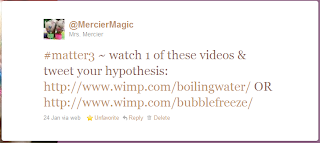I Wonder...
... just how will e-readers change reading? Will it change the definition of books? How will story-telling evolve?
There once was a time where stories were communicated pictorially. Our ancestors would share their stories on walls. Etching out pictures on stone. Thankfully they did so, giving us a clearer picture of their lives. And yet, when I think about my four-year-old nephew. He too began writing in this way. Grasping a crayon, marker, or paintbrush in his left hand and sketching his thoughts on paper.
Then there was the time when most stories were shared orally. Many tribes have a tradition of telling their histories in this manner. Native Americans, Africans, Aborigines, and more. There was even a time in American history where people were entertained with stories on the radio. More similar to today's TV series, but, really no different than the books that Stephen Coontz writes with recurring characters, or the Sookie Stackhouse series Charlaine Harris writes.
Until recently most stories were printed on paper. While there are still instances of picture stories (digital storytelling, wordless picture books, graphica) and oral storytelling (family stories, podcasts, books on CD) the printing press provided new options. Although the printing press has been around for hundreds of years, it is because of the creation of transportation and automation that has allowed printed stories to immediately go global.
And now we have e-readers. Bringing books, magazines, and newspapers instantly to readers. Bringing stories in various formats: written, oral, and visual text. Download a children's book on a NOOK Color and you have the option of having it read to you. Some of the books even bring the books to life, very much like Tumblebooks or iPod/iPad books. I heard somewhere (but have yet to see it) that some magazines available on the NOOK Color will actually give you a video demonstration!
While I sit here, writing, I wonder. What does this mean for reading and writing? Our world is changing at an incredible rate. And with it, you would think so would our way to write and read books. One of the things that I tout about technology is its capability to reach all modalities of learning. Are you a visual learner? Tech can show you. Are you an audio learner? Tech can speak to you. Are you a kinesthetic learner? Tech can have you do. So what does this have to do with books?
Plenty. When I stop and think about how some educator books are written, some have a style where they try to engage the reader in the process. Stopping them and requiring them to do something related to what they just read. Alan November does this in his book Empowering Students With Technology. He writes a bit and then provides something for the reader to actually DO, thus empowering his reader. Other authors have done this as well. When I stop and think about writing that occurs online, many authors do just that...meet the various needs of learners. Think about news you read online. Often there is an accompanying video. How about blogs? They often include pictures, videos, and/or audio along with text. One of my (and my students') favorite online magazines, Youngzine, does this as well. They often have pictures and video embedded into their articles. And they have an option to comment on the article, inspiring young readers to do, react, right there to the article.
And then imagine, what would this mean for how we create and interact with books? Can you imagine reading a book and then being able to choose (I'm also a big believer in choice) to watch a video to see exactly what the author is talking about? E-readers already provide the option for readers to take notes while they are reading and whether they want to share them on Facebook or Twitter. But can you imagine reading an educational text that has a chart embedded in it and then being able to manipulate it right there while reading it? No more photocopying or creating new templates on your computer. How about instantly shooting off a message to the author, bringing a whole new meaning to question the author? Imagine having built in supports to choose from to support your own reading comprehension. How empowering this would be for a struggling reader, being able to interact with text in this manner?

Comments
Post a Comment